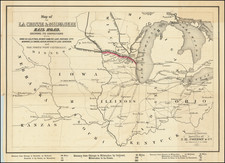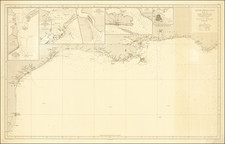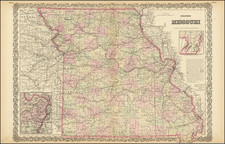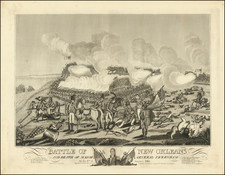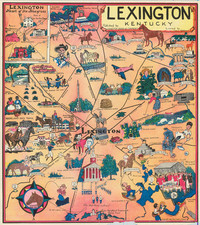Three Centuries of Changing Waters. Mapping the Mississippi from 1765 to 1932.
Representing an impressive feat of American cartography, this map stretches some 50 linear feet and maps the variations in the flow of the Mississippi at fifty-year intervals.
Following the devastating floods of 1927, which caused some $400 million dollars of damages and death and destruction on a frightening scale, the need for an improved understanding of the temporally-changing behaviors of the Mississippi was recognized. While the Mississippi River Commission had been formed almost a half-century before, in 1879, new work was needed to not only map the river, but shield its riparian defenses. The Flood Control Act of 1928 funded this project, and part of the work undertaken during this period was cartographic and intended to improve engineers' understanding of how the river changed over time. This map does precisely that: by mapping previous riverbeds and tributaries, future changes in flow could be predicted.
Starting in Cairo, Illinois, and making its way down to Baton Rouge, Louisiana, this map shows the results of four different surveys of the river: the Ross Survey of 1765, the U.S. Land Office surveys taken between 1820 and 1830, the Mississippi River Commission surveys from 1881 to 1893, and the surveys by the same commission taken between 1930 and 1932. Each survey is depicted in a different color, layered on top of one another leading to a near-psychedelic pattern.
Following the substantial groundwork from the 1938 project, the Mississippi River Commission launched a comprehensive investigation in 1944. This project, known as the Geological Investigation of the Alluvial Valley of the Lower Mississippi River, created a detailed 15-sheet map, entitled Ancient Courses: Mississippi River Meander Belt. This map, by using an array of colors, successfully traced the varying courses of the river over an astounding 30 different time periods. The two projects, both in their own right, significantly contributed to the understanding and mapping of the Mississippi River's transformations.
A History of the Mississippi River Commission
By the second half of the nineteenth century, the great need for navigation improvements and flood control on the Mississippi River was clear. Following several decades of political, engineering, and regional discord, Congress finally embraced the need for a single authority to oversize river improvements on the Mississippi River. On June 28, 1879, the federal legislature established the Mississippi River Commission (MRC) as an executive body reporting directly to the Secretary of War.
The original legislation granted the MRC extensive jurisdiction on the Mississippi River from its headwaters at Lake Itasca, Minnesota, southward to just short of its terminus in the Gulf of Mexico. The act also empowered the MRC to make surveys and investigations necessary to prepare plans to improve the river channel, protect the banks, improve navigation, prevent destructive floods, and promote commerce. The legally mandated membership of the MRC called for three officers from the U.S. Corps of Engineers, one member from the U.S. Coast and Geodetic Survey (now the National Oceanic and Atmospheric Administration), and three civilians-all nominated by the President and confirmed by the Senate.
The act creating the MRC also authorized the Secretary of War to detail officers, men, vessels, and instruments from both the Corps of Engineers and the Coast and Geodetic Survey to the MRC to enable the Commission to carry out its mission. The first meeting of the MRC was held in Washington, D.C., on August 19, 1879, and headquarters were established in St. Louis, Missouri.











